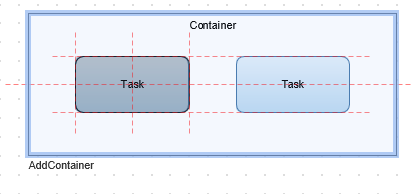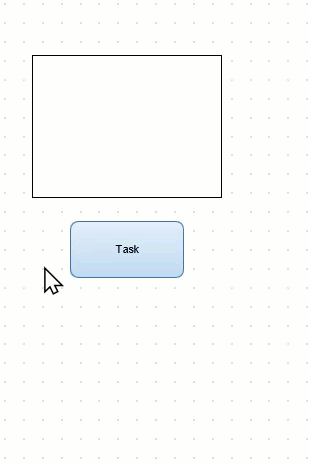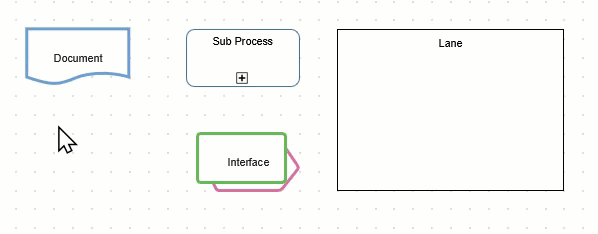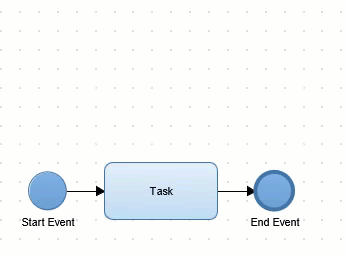meta data for this page
Container Elements
Some elements serve in the symbol notation or within the process map as so-called container elements. They can pick up other elements and ensure that they remain in place when the entire container is moved. Containers can be used very well to model sub-processes or jump targets.
Creating Containers
- Any standard shape, rectangle, ellipse or polygon can be used to create a container.
- Click the selected element with the right mouse button.
- Activate the Container option in the Behavior submenu.
- You can move other elements into the container by dragging and dropping them onto the container. Pay attention to the blue frame.
- To remove an element from the container, drag it to a free space outside the blue frame.
- You can move containers around the canvas like grouped items.
Some hints for containers:
- Shapes in a container only move to the top of the other shapes in the same container when changing drawing order.
- The whole container changes drawing order when selected.
- Just removing the Container Behavior checkmark doesn’t decouple the shapes. You must move all of the shapes out of the container to de-couple the shapes from the container.

Container Symbols
Some symbols of the notations automatically become containers when you add them to the canvas:
- Pools and Lanes (see Pools and Swimlanes)
- Sub-processes
- Interfaces (see EPC)
The Behavior submenu (see Controlling Behavioral Aspects) is not available for symbols in the notations, so the Container option is always active for these elements.
Sub Process Container
Which container you choose for your elements strongly depends on the chosen modeling notation and personal preference. The symbol Sub Process of the BPMN notation is a perfect example of a container:
- As a container object, the symbol can accommodate entire process chains and thus store them in sub processes. This serves for clarity and can reduce the number of symbols on a process map to the essential process steps.
- The icon has a
-or+icon in the bottom center, depending on whether the sub-process is open or closed. - If the sub-process is open (shows
-), all included symbols and elements are displayed. In this state, the size of the shape can also be adjusted. - If the sub-process is closed (shows
+), all included symbols and elements are hidden. In this state, the size of the shape cannot be adjusted.
If you store sub process symbols with included elements in the storage (see Re-Using Elements), remember to open them before adding, otherwise you will not be able to distinguish between them in the storage selection dialog later.



